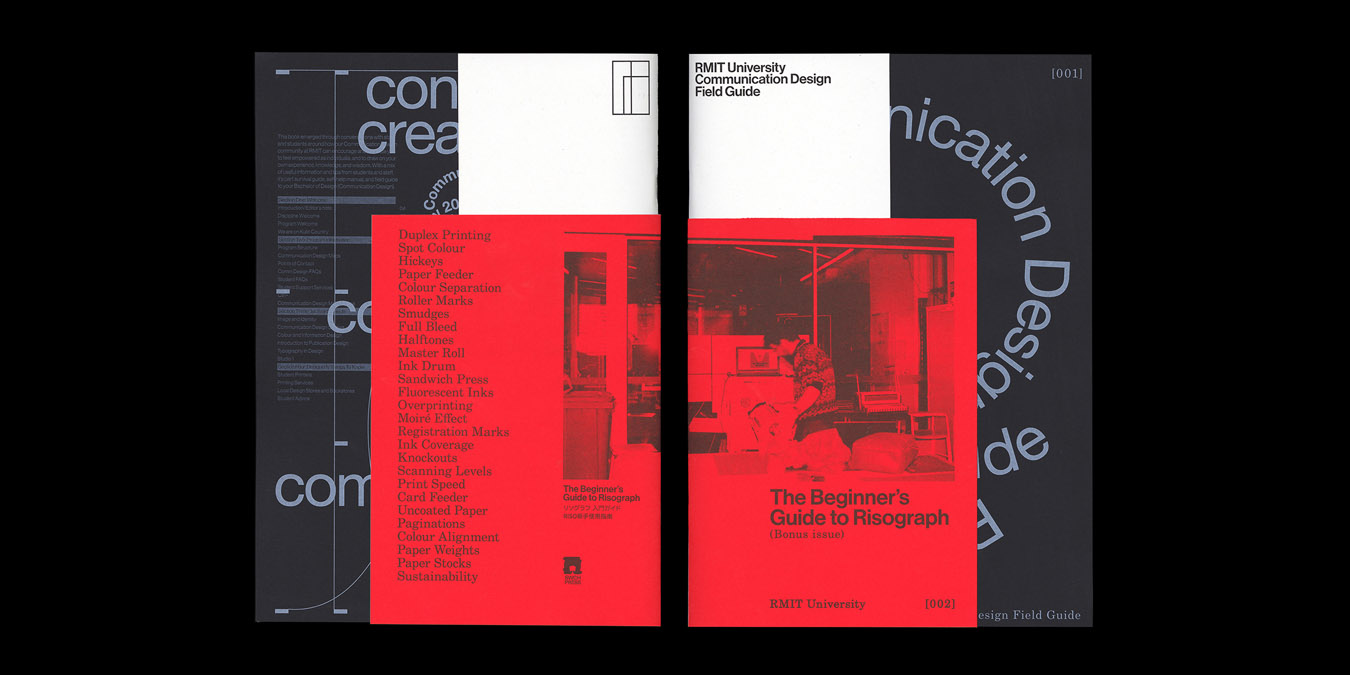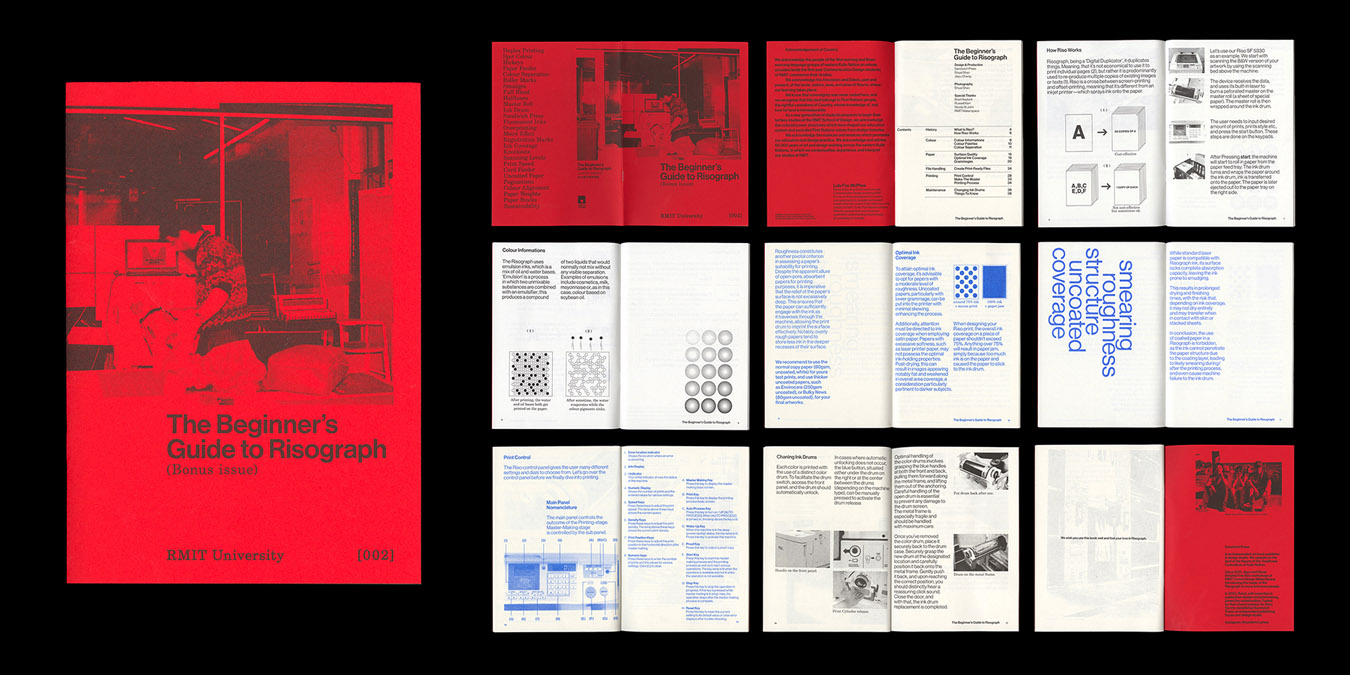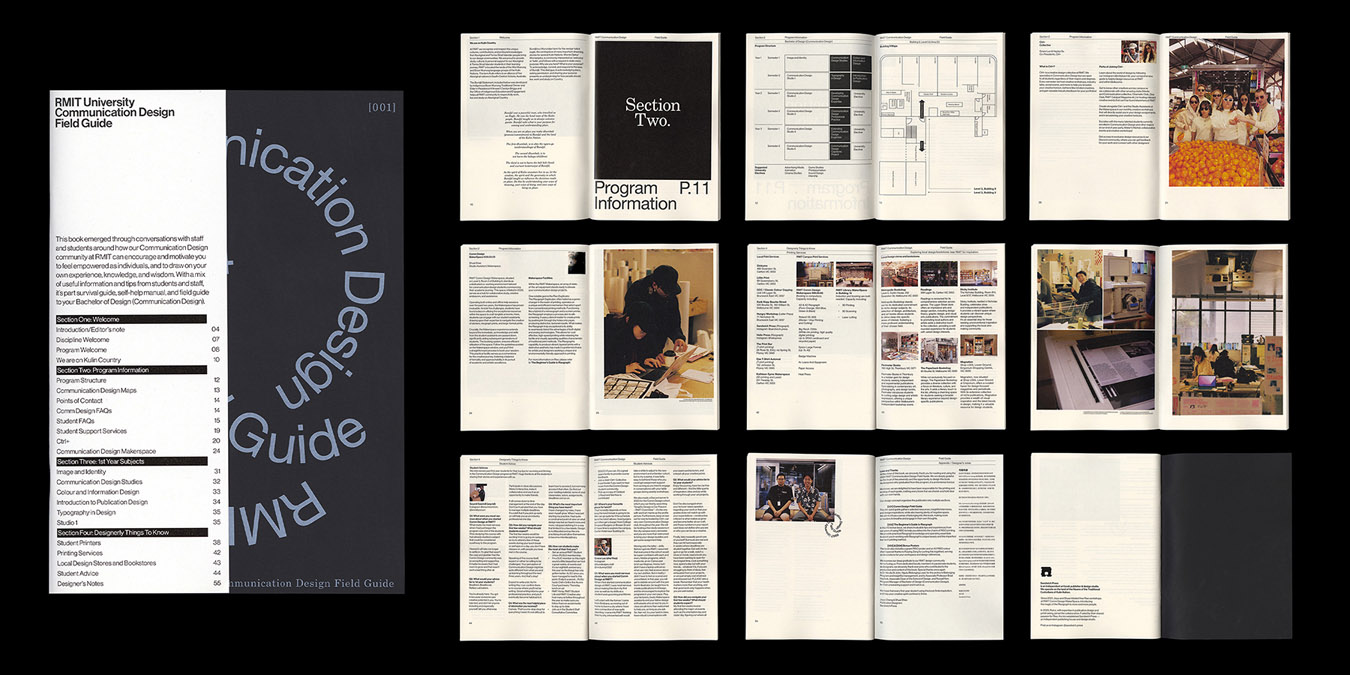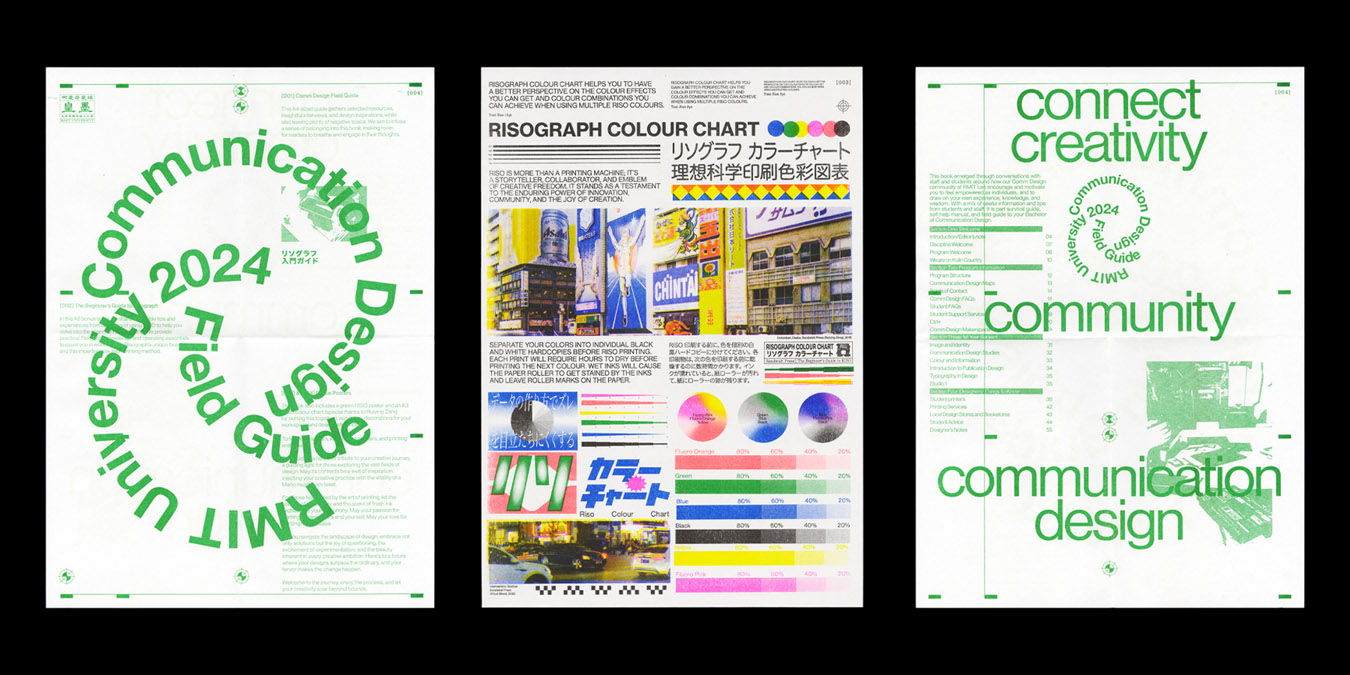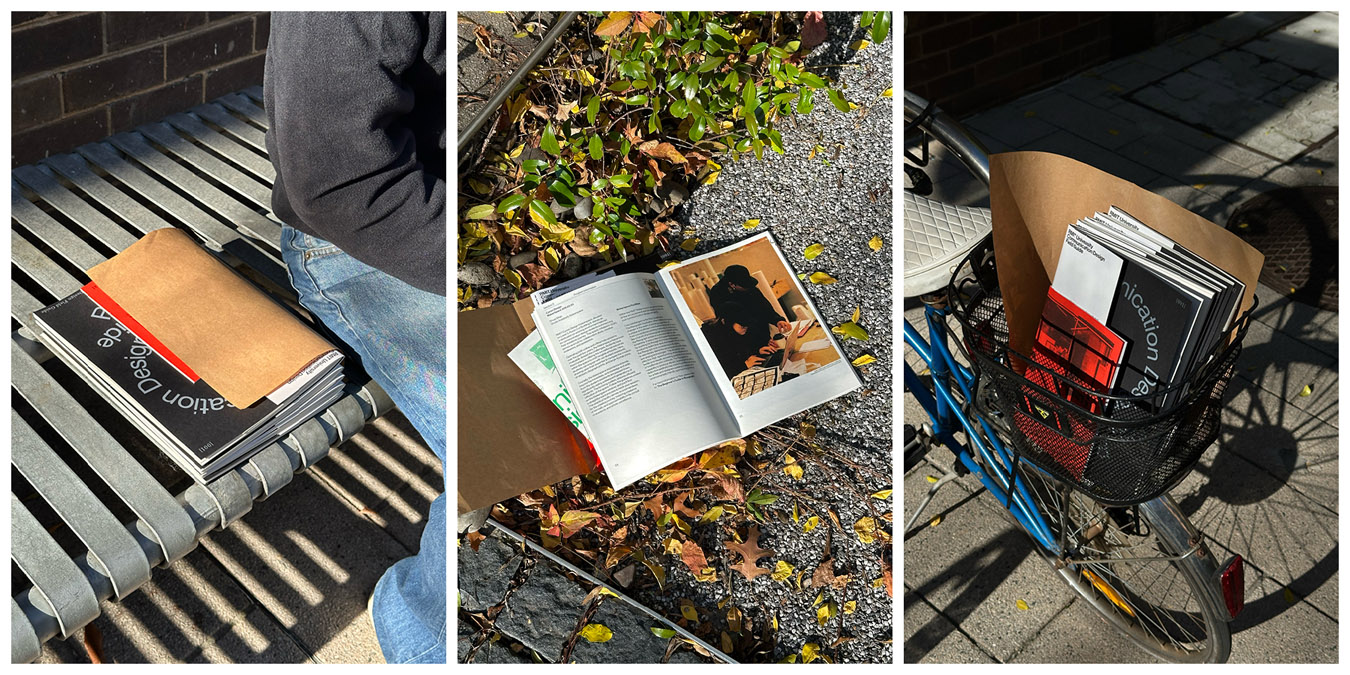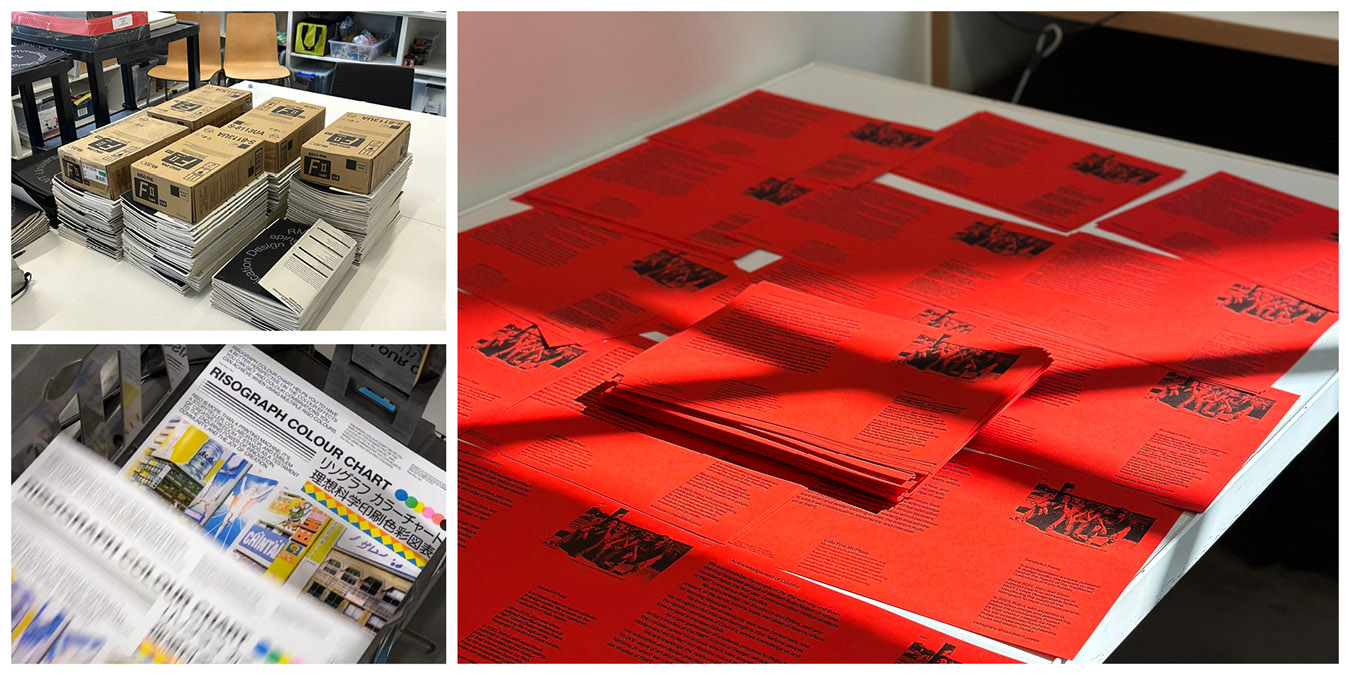The RMIT Communication Design Field Guide was developed through a meticulous and collaborative design process led by RMIT alumni studio, Sandwich Press. The initiative aimed to address the significant challenge faced by first-year students: feeling disconnected and unsupported during their initial weeks at university. To meet this challenge, the team conducted extensive research, including interviews with current students and teaching staff, to understand students’ needs and experiences. This research informed the creation of a comprehensive and culturally inclusive resource that combines crucial orientation information, student support resources, and personal sharing from students.
The design process included iterative prototyping, testing, and feedback loops to ensure the final product was both effective and engaging. The implementation involved high-quality printing techniques, using recycled paper and soy-based ink to align with sustainability goals. The result is a beautifully crafted publication that includes bilingual components and bonus materials such as posters and a guide to Risograph printing. The Field Guide has been professionally executed and finished, exceeding the design brief by not only providing essential information but also fostering a sense of belonging and empowerment among diverse student cohorts.


